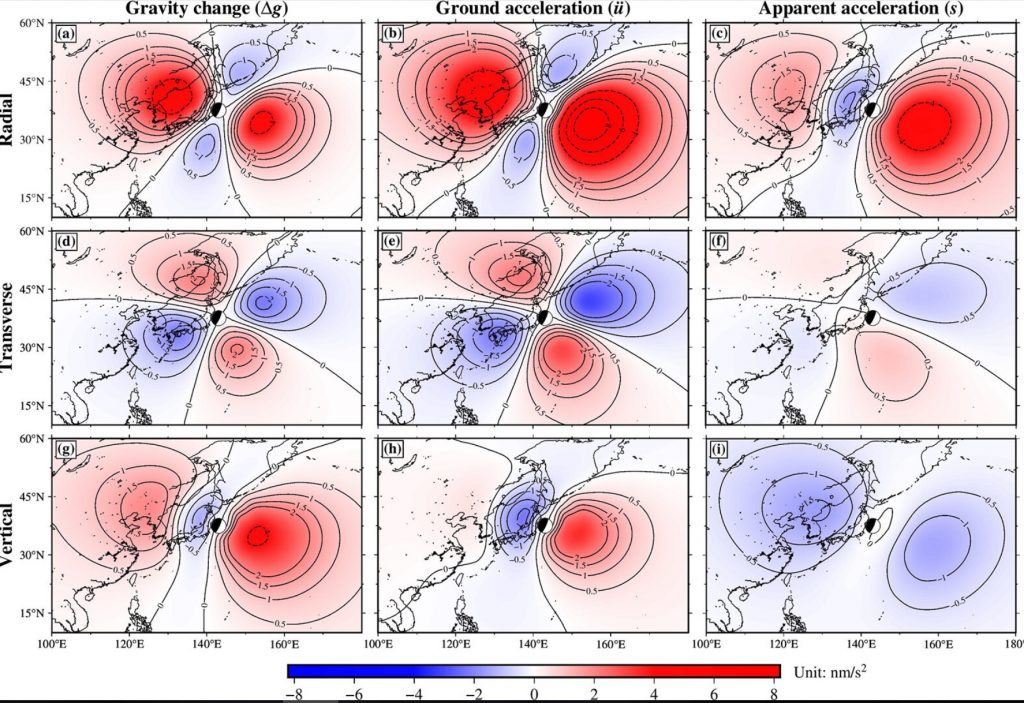Earthquakes send out signals that propagate at the speed of light.
Those signals are sudden changes in gravity caused by a shift in the earth’s internal mass.

These so-called PEGS signals (PEGS = prompt elasto-gravity signals) could make it possible to detect an earthquake very early before the arrival of the destructive earthquake or tsunami waves.
The gravitational effect of this phenomenon is very small. So PEGS signals could only be recorded for the strongest earthquakes.
Moreover, they are not only generated directly at the source of the earthquake, but also continuously as the earthquake waves propagate through the earth’s interior.
However, since the gravity that can be measured locally depends on the mass distribution in the vicinity of the measuring point, every earthquake generates a small but immediate change in gravity.
New Model to simulate creation of PEGS Signals
The new algorithm developed by the GFZ researchers can calculate PEGS signals with high accuracy for the first time and seems to allow conclusions about the strength, duration and mechanism of very large earthquakes.
Although every earthquake generates a small but immediate change in gravity, they also create waves in the earth itself, which in turn change the density of the rocks and thus the gravitation a little bit for a short time.
Morover, this oscillating gravity produces a short-term force effect on the rock, which in turn triggers secondary seismic waves, which can be observed even before the arrival of the primary seismic waves.
The new algorithm was calibrated on the Tohoku quake off Japan in 2011, where the measurements on the strength of the PEGS signal were already available and the consistency was perfect.
Or just don’t believe in gravity:
This new method could be used to determine whether a strong earthquake could lead to a tsunami. That would be indeed awesome as the dangers of the Great Cascadia Earthquake and Tsunami are looming over the Pacific Northwest. More earthquake news on Strange Sounds or Steve Quayle. [Phys.org]
Follow us: Facebook and Twitter. By the way you can also support us on Paypal. Please and thank you!












This is an inaccurate measurement of acceleration, *not an accurate measurement of gravity.
See the unit, at the bottom of the chart:
nm/s^2
Why not just say Newtons, instead of squeezing all these units of measurement together, into one compound word.
N = m/s^2
Just saying. Is that standard?
In order to find the value for “N” (Newtons), you have guesstimated the number of kilos, contained in the landmass.
Also, can you please explain to “Flat Earth Man”, how you have squared a second. Time is typically considered to be linear.
The link above is suspicious? Why not put title of it let us find it on You Tube. We scan with multiple sites for viruses. Your sites are very suspicious. We have scanned it with 10 different sites ?
https://youtu.be/QIT_SbigQ3c